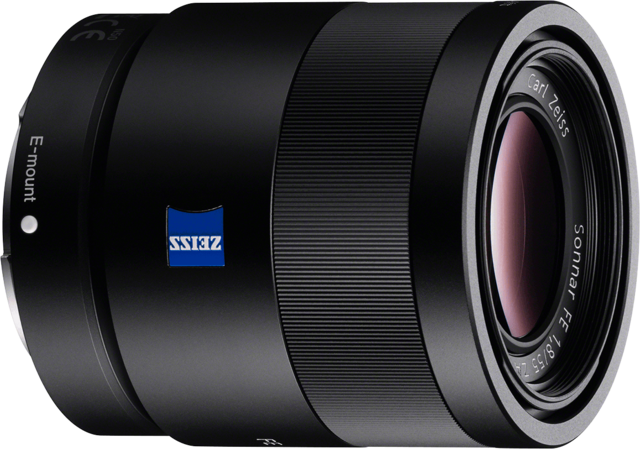I’ve owned many, many Canon and Nikon lenses in my life, as I was originally a Canon shooter but due to the persistent cripple hammer and slightly worse high ISO performance (extreme high ISO required for my sports shooting), I moved to Nikon about seven years ago. Again due to the sports shooting, I’m required to own some high end glass. I’ve had high end Canon cameras repaired and high end Nikon lenses repaired (300mm f2.8) successfully and for reasonable cost.
Sony has worked it’s way back into my bag as a carry camera (requirements: small, discreet and light) and for video where 50/60 fps 4:2:2 10-bit is the requirement.1 Now I need to buy some Sony lenses and I wonder if it’s safe to buy Sony lenses used and/or if different generations have more or less issues. Over the decades, I’ve always found Sony bodies more fragile than Nikon or Canon. Moreover, obtaining service has been more difficult. I’m specifically considering the Sony 55mm f1.8 ZA, a lens which was originally released a decade ago.

Sony 55mm f1.8 ZA Sonnar co-branded Zeiss lens. Fast, light and good-looking (for a modern lens).
In the comments to Sony lens reliability and repair cost?: Sony Mirrorless Lens Talk Forum: Digital Photography Review, Tim Crammond asks:
Here is a passage which I read on phillipreeve.net’s review of the Sony Zeiss FE 1.8/55 (which BTW is altogether very positive, notwithstanding the quote below). My bold italics.
“I asked Roger Cicala of lensrentals.com about the FE55’s reliability and he told me that “It’s really not problematic at all for a Sony. Good in-service rate and no obviously recurring problems. Like all Sony’s when it breaks it costs a fortune to repair, but no more likely to break than the average lens.” “
I’m probably asking more out of curiosity than real concern: it’s extremely rare for any lens I’ve owned to develop a problem if it hasn’t been subjected to some sort of trauma – but FF Sony FE glass is not cheap, and warranties don’t last forever (nor do they cover me accidentally exposing it so said trauma the day after I buy it). Does anyone have the sort of background to confirm or refute that Sony lenses are either more liable to break down, or more expensive to fix? If so, care to speculate why?
Delightfully, Roger Ciala stopped by himself on 3 January 2019 and explained exactly what he meant:
The Lensrentals guy is willing to unpack what he meant a little. Up front, there are some areas that I’m under nondisclosure about because I do a little work for Sony. But basically I can comment on what I have repaired and what I’ve taken apart or tested.
First, comments like “I’ve had 20 and never had one break” are valid, but given that the overall repair rate (other than damage) is measured in 1 – 4% per year, that’s as you’d expect. I take care of well over 20,000 lenses per year, so we get to see some idea of what’s more and less likely to need repair. Overall it’s low.
Sony started making FE lenses just a few years ago; they brought in a lot of optical designers and outsourced a lot of stuff too. Early on, and with early iterations of new technology, they had problems. It would have been a miracle, dramatically expanding their design and manufacturing operations, turning out more new lenses a year than Canon, and using a lot of new technology, if they didn’t. There were two main issues; optical variation and mechanical design flaws. I’ll limit this to mechanical and electronic stuff.
The first generation of electromagnetic motors had a lot of problems, both Sony and ZA and were prone to break. There were mechanical design flaws in all the 70-200s (not just the f/4, the 2.8 is worse) that made them prone to break. And worst of all, the people designing the lenses didn’t really believe lenses need repair. So where Canon or Nikon maybe have 800 parts in a lens you can order and replace, Sony had about 7. One of the 7 was the ‘optical assembly’ which included all the glass, the focusing assembly and the aperture as a single part costing about 90% of what a new lens cost. So scratch an element, burn out the focusing motor, etc. and the replacement part cost just about what the lens did. At one time we had 30 copies of the 24-70 marked ‘unable to repair’ for minor things, there were no parts. We scavenged some to save others, but all of the 30 had either burned out focusing motors or damaged front elements, so that only went so far.
Compound this that in the US, Sony had an exclusive contract with a really poor repair center and there were problems. Sony has worked hard the last several years to improve design, construction, parts availability, etc. Sony lenses designed and released lately are generally more reliable and less expensive to repair (not as good as Canon or Nikon yet, but better). The last ‘high repair rate’ FE lens we’ve flagged was the 70-200 f/2.8 GM (can be a great lens, but it’s one of about 4 lenses from all brands that personally I wouldn’t own; it’s going to break eventually and when it breaks they aren’t going to be able to fix it).
On the flip side, the 85mm f1.4 GM is a very low repair rate lens, as are most recently released Sony’s. I just took apart the new 400mm f2.8 OSS and it’s built as well as any supertelephoto ever made. Sony is getting it.
Put all of this in the perspective that a ‘high repair rate lens’ has a half-time to failure of at least several years and you’d have to figure it’s unlikely to hit you.
Cicala’s advice is based on enough experience and detailed enough that it deserves a more permanent home than the DPReview forums, who almost disappeared forever earlier this year, together with their archives.
My conclusion after reading his remarks closely are:
- don’t count on any after sales service on Sony lenses (unlike Canon and Nikon)
- don’t buy really expensive Sony glass, it’s not a safe long term investment (unlike Canon and Nikon)
- don’t buy Sony zooms unless you really need them, buy their primes
- with primes your experience as a single photographer will probably be pretty good
- the Sony 55mm f1.8 ZA is a first generation lens, I’m concerned about owning it, though my experience with a Sony 35mm f2.8 ZA has been very good.
I would also worry about buying Sony lenses used as there’s no affordable repair and one never knows how a lens has been treated. A lens can be damaged with no visible damage to the lens. So if buying a Sony used, it makes sense to avoid any lens with signs of physical wear and even if a lens is in pristine condition, make sure to test extensively before purchasing.
It also reinforces the wisdom of staying on Nikon as my primary system.
-
Their ZV-E1 fits all the requirements, effectively finally replacing my much beloved but long broken NEX-5T. The A6300/A6500 line were too much larger and not enough better, along with awful rolling shutter to justify keeping Sony gear. The normal Sony full frame camera body suffers from awful ergonomics (for left eyed shooters) and isn’t small enough. As well as size and weight, what Sony’s ZV-E1 does have going for them now is gyroscopic data recorded with the video, allowing one to shoot ultra stable video spontaneously without either a tripod, steadicam or a gimbal. ↩

Alec Kinnear
Alec has been helping businesses succeed online since 2000. Alec is an SEM expert with a background in advertising, as a former Head of Television for Grey Moscow and Senior Television Producer for Bates, Saatchi and Saatchi Russia.
Well, national geographic chosed sony as primary system for their photographers, I bet they did their research :)
Interesting point, Tomas. Based on Sony behaviour actively recruiting media organisations, I would bet National Geographic has a special deal on priority service at discount rates. Such endorsement creates credibility with end users (yourself for example). Sadly, end users end up paying the freight for the special deals and getting worse service.
I do own some Sony mirrorless lenses for use on my ZV-E1:
24mm f2.8G
35mm f2.8
50mm f2.5G
85mm f1.8
I’m satisfied with these lenses but they are all lightweight, simple primes, mostly at modest cost. I’d be concerned to own expensive Sony teles based on their service record.